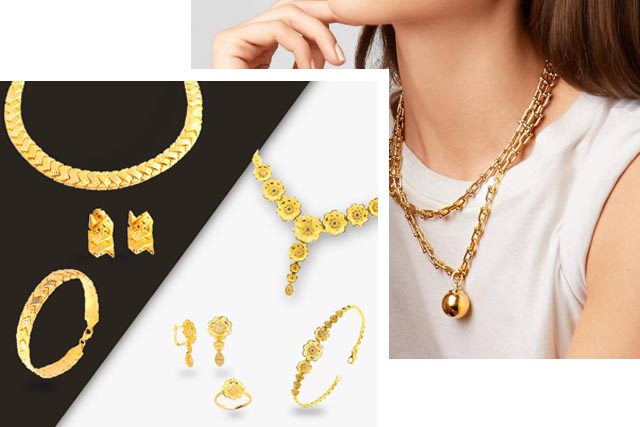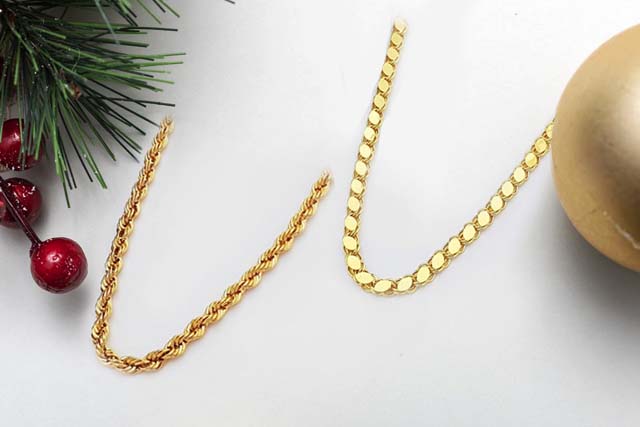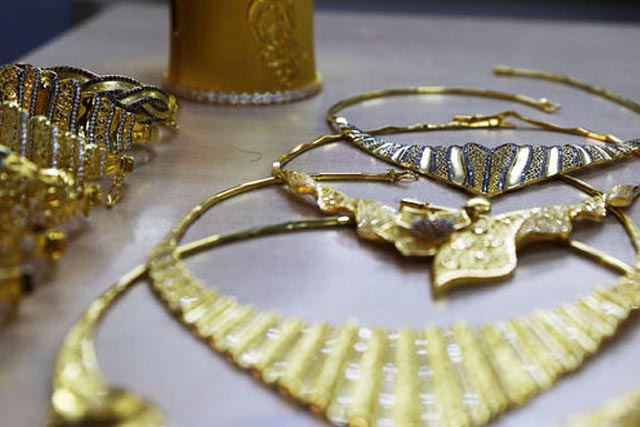13 Things You Should Know About Gold Plating | 2021 Guide

Plated gold jewelry comes in a variety of quality levels that are largely determined by the density and purity of the gold plating. We provide cutting-edge technology to our valued manufacturers, and we have been successfully selling products from the world's leading brands from abroad in Turkey for many years. The products of each brand we select are meticulously compared to their counterparts, and after price performance criteria are established, they are brought under our company's roof. Furthermore, as a company, we not only supply machinery and equipment, but we also immediately share with you the latest developments, trends, and important information in the world of jewelry production. In addition to all of this, you can get the jigsaws you need from our company and buy them at a reasonable price.
Whatever you want to know has been explained in detail, and you wonder about gold plating in this blog post. As you may be known, gold is gradually increasing in value today. As a result, gold-plated jewelry has become increasingly popular in recent years. At the same time, plated products are generally preferred because they are less expensive than pure gold jewelry. You can add elegance to your elegance and have a dazzling style by wearing plated gold jewelry.
What is Gold Plating?
It is a technique that involves gluing a tinny layer of gold onto a base metal. Plating is widely used and preferred in the jewelry industry. Gold and rhodium are two commonly used metals. Luigi Brugnatelli, an Italian chemist, invented plating in 1805 by coating a thin layer of gold or silver. Plated gold jewelry pieces are commonly used to imitate designer labels or more expensive items that are not available in the market. It is impossible to distinguish, plated jewelry that has been meticulously prepared and cared for and extremely expensive gold jewelry,
Let's look at how the two chains compare. One is a 14k plated necklace that is quite expensive. The other is a plated necklace that is more suitable in terms of price than the other. So, can you tell which necklaces are real gold and which are plated?
What is The Gold Plating Process?
The process of plating jewelry with gold is known as gold plating, as the name implies. Plating gold jewelry is a simple process that requires a few steps.
- First and foremost, the jewelry should be thoroughly cleaned and free of all dirt. This is critical because dirt and oil deposits on the metal prevent the gold coating from properly adhering to the jewelry.
- The best way to remove dust and oils from jewelry is to use steam cleaning, ultrasonic cleaning, and electro cleaning methods. These methods ensure that all dirt and oils on the metal are easily removed and that the coating process that will be applied to the product is applied properly.
- The base metal is then coated with a thin, high-quality nickel layer. This procedure is carried out to shield the gold coating from any influence of the base metal. The nickel layer also prevents the gold liquid in the plating vessels from contaminating the base metal.
- Finally, the jewels are dipped into vessels filled with gold for the final coating. A positive electric charge merges the gold to the base metal and, the jewelry is hung to dry once the desired coating thickness has been achieved.
Which Metals Can be Gold Plated?
Many metals, including nickel, brass, stainless steel, silver, and copper, can be plated with it. Metals used in advanced industrial applications, such as tungsten and titanium, are frequently plated with gold. Silver and copper are the metals that are most frequently used.
Is Gold Related to Real Gold?
Yes, the plating of gold is real gold. But since gold in plating is used very little, the value of gold does not apply to such jewelry. Gold pureness, like solid gold, is different. Typically, the lowest pure gold is 10K, and the highest pure gold is 24K. The main difference between these gold types is the color instead of the value of the gold plating. The purer the gold, the more its color resembles the gold. However, regardless of purity, even if used during the coating process, the value does not change significantly.
How Thick Should The Gold Plate Be?
The thickness of gold-plated jewelry can range between 17 and 2.5 microns. Gold electrolysis or gold washing/polishing refers to a coating with a thickness of about 17. The coating layer is incredibly thin. It is only recommended to use 0.05 percent gold to protect jewelry pieces such as necklaces and earrings from heavy wear and tear. The thickness of the coating wears out quickly. The ideal coating thickness is between 0.5 and 1.0 microns. However, this appears to be a thin coat. Even this is suitable for wearable jewelry items like rings, necklaces, and bracelets. The coating of more than 2-micron mark is fairly thick and is known as heavy gold plating. However, even this amount of coating is still considered very thin in terms of value, and the main advantage of thicker coating is that it lasts for a longer period.

Do Gold Plates and Jewelry Have any Value?
The majority of jewelry and other items are plated. In some cases, recovering gold from these objects can be difficult due to the thinness of the coating that covers them. As a result, removing the gold from jewelry and other items that have been plated is not a worthwhile endeavor. Furthermore, the profit margins on these golds are extremely low. It also uses real gold in its plated jewelry, but the gold is not particularly valuable.
As previously stated, the plated parts contain very little real gold. As a result, plated jewelry is not considered particularly valuable. Plated jewelry is frequently of little or no resale value. To summarize, when purchasing plated jewelry, it should not be viewed as a monetary investment. Furthermore, in terms of real gold content, gold-filled designs are a much better option.
Does Gold Plating Tarnish?
Over time, gold plating may fade and darken, losing its original luster and beauty. This is fairly common, and it occurs regardless of the quality of the component. Many people, however, are confused as to why plated jewelry turns black. After all, gold is a non-rusting and non-corroding metal. The usual problem is not the coating itself but the base metal susceptible to wear and oxidation. The base metal molecules pass over time onto the gold layer and affect its appearance. If the gold coating is too thin, the color fades and seems to have quickly darkened. To prevent the base metals from affecting the appearance of the gold, it is necessary to first plating the jewelry with nickel, as previously stated. If this is performed during the plating process, it will be more durable. It is possible to avoid the blackening of the gold.
How Long is The Gold Plated Permanent?
It is anticipated to be permanent during the coating process; however, wear and fading occur over time, as with all coating types. Gold plating begins to exfoliate after a certain amount of time, revealing the underlying base metal. At the same time, plated jewelry that has been worn for a long time loses its shine. If the coating process is carried out wisely, it could last for a long time. It is best to have them recycled regularly in dealing with tarnished parts. The intensity of this process will be determined by the thickness of the layer, the product quality, the base metal color, and how worn and frayed the part.
How Should I Repair and Restore Gold-Plated Jewelry?
By taking good care of your plated jewelry, you can extend the life of the jewelry piece and maintain them looking as new as possible. The following are some things you should do.
- Store gold-plated products away from chemicals, lubricants, and make-up. After you've applied your makeup, hairspray, and perfume, it's best to wear your plated jewelry. Remove your used joys before you do household because chemicals can in soaps, shampoos, and sanitizers damage your plating layer.
- It is critical to have your hands clean when handling plated jewelry. As a result, we advise you to wash your hands before putting on and taking off your jewelry.
- Protect plated jewelry from chlorinated or salty water. The removal of jewelry from pools, Jacuzzis, and the sea will help your plated jewelry last longer.
- Body oils and sweat have an impact on the gold coating. As a result, you should wipe down your jewelry as often as possible and keep it away from oils.
- It is critical to clean your plated jewelry regularly to extend its life.
You can clean your jewelry with a baking soda or a cleaning solution for professional jewelry. Avoid the use of toxic chemicals or aggressive cleaning products during the cleaning process.
- Additionally, avoid scrubbing or brushing your plated jewelry, as this can expose the metal beneath the plating and lead it to flake.
- Avoid exposing rubbing to plated jewelry as this will affect the part to wear and flake away fast. Pouring and scratches may also occur if the plywood is folded and rubbed against one another. So, wear your gold-plated jewelry alone is best.
How do I Determine Whether My Jewelry is Gold-Plated?
When you buy jewelry, your jeweler should tell you whether it is gold or plated. However, you can tell whether the jewelry you're going to buy is real gold or plated by looking at the following examples:
- When compared to real gold jewelry, the price of plated pieces is usually quite reasonable. As a result, you can differentiate based on price.
- On gold jewelry, there is usually a stamp for the setting control. Furthermore, we recommend that you buy from reputable and well-known jewelers. Otherwise, you may have difficulty distinguishing between gold and plated jewelry.
- Plated jewelry is typically made of 22K or 24K gold. It gives the jewelry a very shiny gold appearance in this case. Because their purity levels are usually less than 18K, solid gold jewelry is usually much less gold.
- You can tell if your jewelry is coated if it has an uneven hue or flaking on the piece.
Is Gold Plating Hypoallergenic?
This is determined by the thickness of the gold and the presence of allergen-causing metals such as nickel, zinc, and cobalt. Individuals who are allergic to metals may experience skin reactions when wearing plated jewelry, which is not hypoallergenic in general. This is because the component contains a high density of nickel. Nickel in the jewelry comes into direct contact with the skin when the gold layer wears away or flakes away, causing reactions. We, therefore, recommend that you check the metals and alloys in plated gold jewelry before purchasing it to ensure that you will not have an allergic reaction to them. If you have a metal allergy, we recommend that you stay away from metal allergens.
Should I Use a Gold-Plated Kit at Home?
Coating tools, as well as maintenance kits, are extremely enjoyable and simple to use. Gold plating kits are an excellent way to learn about the plating process and practice gold plating your own pieces. At-home plating kits are one of the most effective methods of ensuring that your plating jewelry remains consistently shiny.
Where Can I Purchase Gold-Plated Jewelry?
Shopping at Alex Machine jewelry store is one of the best ways to find gold-plated jewelry. Because these are low-cost jewelry options, you can find them almost anywhere. You can easily find information on the internet when you search for it and find plated jewelry alternatives. Furthermore, you have come to the right place if you are looking for high-quality, long-lasting coating materials. You can perform high-quality coating processes with Pino coatings, which are among the coating materials. Click here to view the products and make a purchase at a discounted price.









